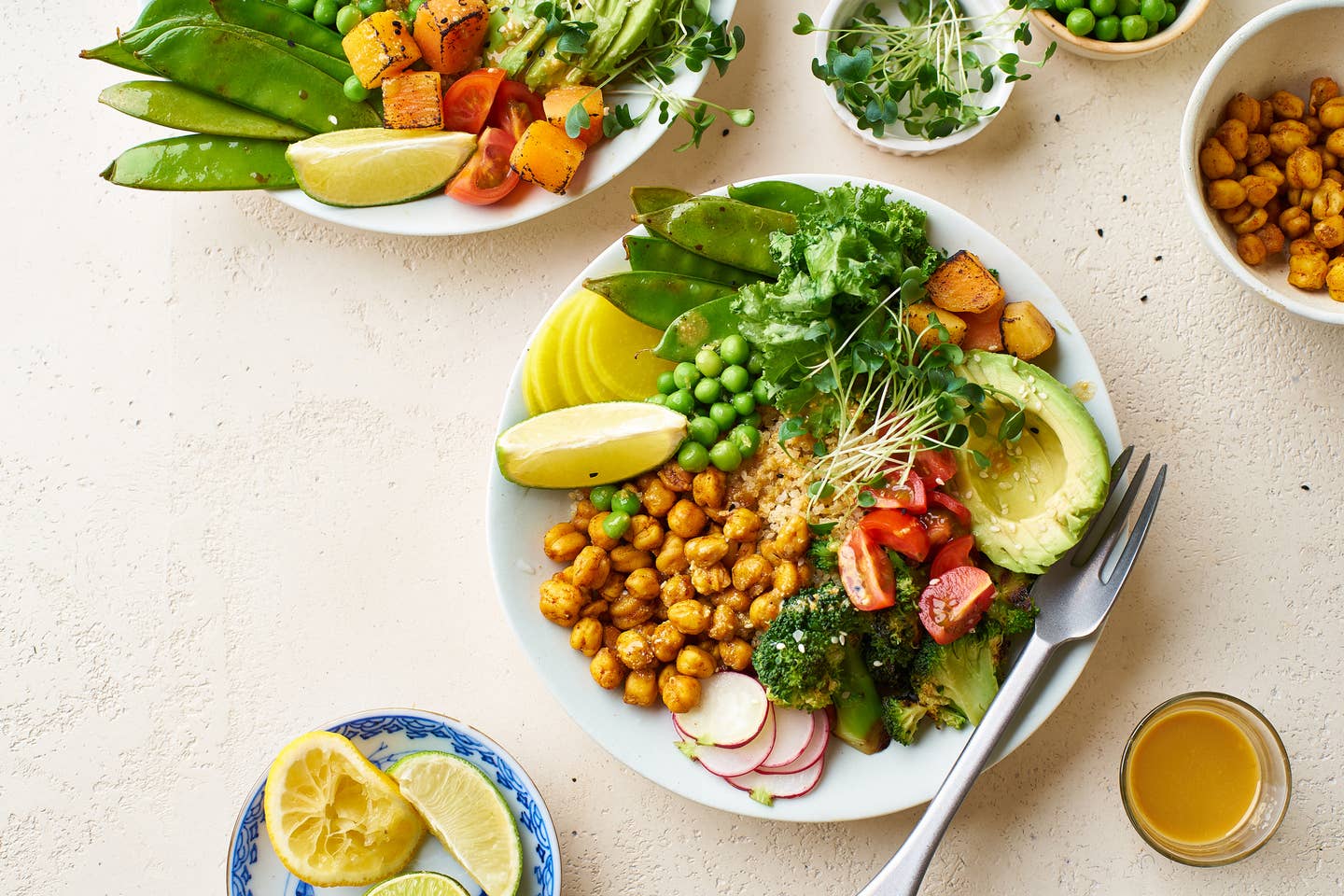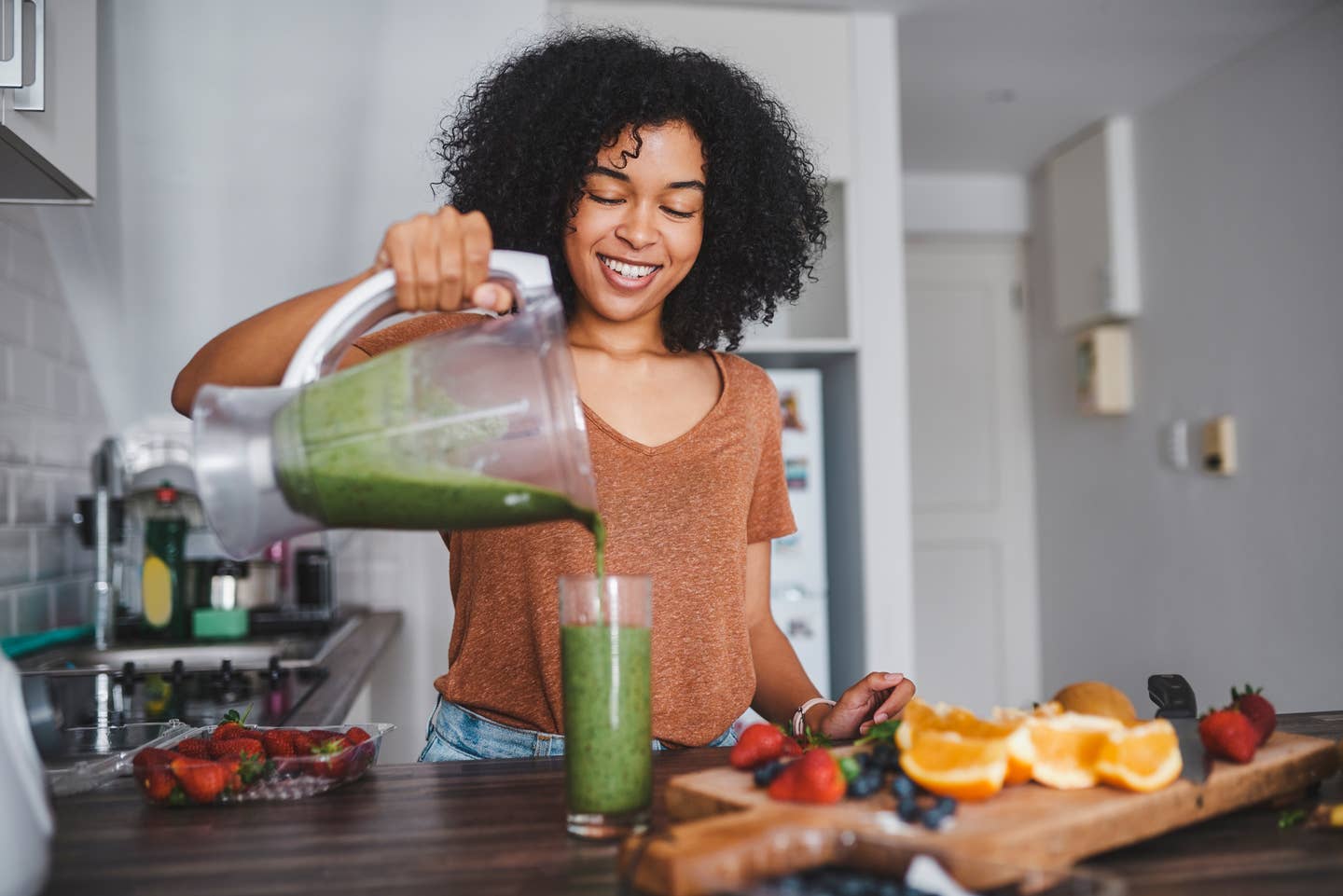
How to Eat to Help Lower Risk of Colon Cancer, According to Experts
Colon cancer is often thought of as an old person's disease, but sadly, more and more younger people are turning up with this cancer, the second most deadly in the U.S., according to the statistics that show that while the risk increases with age, the rates of this cancer are skyrocketing among people under the age of 50. The rate of people getting colon cancer under 50 rose by over 50 percent in the years leading up to 2014.
Colorectal cancer deaths now account for nine percent of cancer deaths, after lung cancer (23 percent), and account for more cancer fatalities than pancreatic (eight percent), breast (seven percent), prostate (five percent), and cancer of the liver or bile duct (five percent). All other cancer deaths accounted for less than five percent, according to the latest stats from the CDC.
According to a Yale Medicine article, doctors there recently reported treating younger patients every year, one as young as 18, but others in their 20s, 30s, and 40s, who don't recognize the signs. "The American Cancer Society reported on the largest analysis of the trend so far in the Journal of the National Cancer Institute. They found people born in 1990, who would be 31 now, have double the risk of colon cancer and quadruple the risk of rectal cancer compared to people born around 1950."
“We are seeing a clear uptick in colorectal cancer in younger generations,” says Haddon Pantel, MD, a Yale Medicine colorectal surgeon, even as the overall numbers are dropping, the incidence in younger people is rising.
So what’s driving the spike in cases of colon cancer among people under the age of 50? Numerous factors are to blame, but diet appears to be the number one driver of risk. “Poor diet is the biggest risk factor,” says Rajiv Sharma, M.D., gastroenterologist with GastroMD in Tampa, Fla., and author of Pursuit of Gut Happiness, who’s seen a rise in younger patients with colon cancer. His youngest was a 24-year-old with no history of colon cancer. “People are eating too many inflammatory foods and not enough plant-based nutrients.”
Foods That Raise Colon Cancer Risk
Even with a direct relative who had colon cancer, which does elevate your risk, you’re not helpless in preventing colon cancer. “Individuals do have some control,” says Lisa Ravindra, M.D., primary care physician with Rush University Medical Center in Chicago. “Two of the biggest ways to lower your risk, even if you’re at higher risk, are maintaining a healthy diet and getting regular exercise.”
Sharma recounts his medical training in India, where he got to observe colonoscopies among the largely vegetarian population, who ate little or no processed foods. “They had hardly any colon polyps,” he says. Polyps, while generally benign, are small clumps of cells that grow and attach to the lining of the colon and which can be a precursor to colon cancer. Whether they appear is largely influenced by diet. “These polyps are a disease of Western foods.”
By "Western foods" he means the standard American diet, namely one that’s high in animal products and thus loaded with saturated fat, cholesterol, and sodium. These are foods that are considered pro-inflammatory because they drive up inflammation in the body, and “all diseases start with inflammation,” Sharma says.
Foods Linked to Colon Cancer Risk
So what are some of the foods linked with colon cancer that it's smart to eliminate? Here are four.
1. Red and Processed Meats
Start with red and processed meats. “Although the data are not entirely consistent, long-term frequent consumption of red meat (like beef, pork, or lamb) or processed meats (like sausages, bacon, ham, beef jerky, corned beef, bologna, pepperoni, and other smoked, salted, fermented or cured meats) appears to be associated with an increased risk of colorectal cancer,” Ravindra says, noting that the World Health Organization has labeled processed meat carcinogenic and red meat as probably carcinogenic. The report places these foods in the same risk category for cancer as asbestos, cigarettes, and alcohol.
2. Added Sugar and Sodas
Sugary foods and beverages may even play a role. A recent study in the British Medical Journal found that sipping two or more sugary drinks a day in adulthood and adolescence was associated with a higher risk of early-onset CRC among women. While this was a small study, “there is no nutritional benefit to sugary foods and drinks so they’re best avoided,” Ravindra says.
3. Excess Alcohol Consumption
And then there’s alcohol, which receives mixed messages in the media. But when it comes to the risk of cancer, colon included, the message is clear: “Zero is best,” Sharma says, echoing the American Cancer Society’s stance that it’s best not to drink alcohol. And there’s science to support it. Take, for instance, a study in the Annals of Oncology that found strong evidence for an association between drinking just over one drink a day and colorectal cancer risk.
Of course, zero alcohol is something most people aren’t going to follow, which is why these experts make some allowances. Ravindra says that if you are drinking you should limit yourself to no more than two drinks a day if you’re a man, and one if you’re a woman, but Sharma has a different take. “Limit yourself to one or two a year,” he says.
4. Smoking Tobacco
And while this isn’t a food, smoking should be avoided, no matter your risk. It’s been associated with increased incidence and mortality from colon cancer, Ravindra says.
Fiber and Colon Cancer Risk
When it comes to preventing colon cancer, a plant-based diet is the healthiest approach, because of the fiber content in plants. “Fiber is critical for colon cancer prevention,” Sharma says. In fact, a study from Cancer Causes & Control found that men who ate 35 grams or more of fiber a day had a 40 percent lower risk for colorectal cancer than those who ate 13 grams a day.
Fiber is beneficial in cancer prevention because of how it affects gut health. For starters, the soluble type of fiber is broken down by your intestinal flora into short-chain fatty acids like butyrate and propionate. “They change the way your gut lining’s DNA expresses itself, which leads to better gut health,” Sharma says. A healthier gut helps decrease inflammation and mutations of DNA, which translates into fewer polyps and less cancer.
Insoluble fiber serves as roughage, helping push out waste as it moves through your intestines. Insoluble fiber actually binds with toxins, bulks up your stool, and helps you poop, explains Sharma. “When you poop, you expel toxins and unnecessary waste and get your colon ready for another load of food,” Sharma says. Ideally, you should be expelling these toxins at least once a day.
Most vegetables, fruits, whole grains, legumes, nuts, and seeds –– the basis for a plant food diet –– can benefit your body and lower your risk of colon cancer, Sharma says. But the stand-outs are nuts, vegetables with deep green, red or orange colors like carrots, cabbage, Brussels sprouts, spinach, broccoli, and bell peppers; fruits like berries, pomegranates, and acai; ginger; garlic; and spices, especially turmeric, which can help decrease the formation of polyps. Sharma also recommends gut-friendly fermented foods like kimchi and sauerkraut.
How to Lower Your Risk of Colon Cancer
You can do everything right (diet, exercise) and still have the unlucky diagnosis of cancer. The most important step in prevention is screening, which can detect precancerous polyps and remove them. Getting a colonoscopy is important, but so is a regular checkup where doctors can assess your risk. “When caught in earlier states, colorectal cancer is most treatable,” Ravindra says. In fact, 60 percent of colorectal cancer deaths could be prevented with screening, according to Fight Colorectal Cancer.
Until recently, guidelines called for screening to begin at age 50. Yet new recommendations from the U.S. Preventive Services Task Force call for screening in most individuals to begin at age 45 and repeat every 10 years if nothing is found at your screening. And you should know the signs such as bloody stool or bleeding when you go to the bathroom, constipation, or any dramatic changes that are unexplained in your usual bathroom habits.
While the gold standard in screening remains the colonoscopy, which is a procedure that sends a tiny camera and light through your rectum to look inside your colon to spot early signs of colorectal cancer, there are also other early tests coming on the market. Sharma recommends that everybody get this as their first screening, even if they’re vegan.
There’s also an at-home test you can do instead called Cologuard. “It analyzes your stool sample for blood or DNA fragments that could be from cancer,” Ravindra says, noting that Cologuard detects 92 percent of colon cancers overall but is recommended only for people who are at average risk. If it’s negative, you can wait three years before repeating. If, however, it comes back positive, you’ll be asked to undergo a colonoscopy for further evaluation.
Talk with your doctor about what’s best for you, but until then, don’t wait to change your diet. Load your plate with plants to keep that colon as clean as possible.
For more expert advice, visit The Beet's Health & Nutrition Articles.
You may think iron is synonymous with meat, and while animal protein certainly has it, that doesn’t mean you can’t get enough iron if you eat a mainly plant-based diet. In fact, you can, if you know the right foods to choose and how to pair them. The daily recommendation from the National Institutes of Health (NIH) for iron intake is 18 milligrams (mg), but not all iron sources are created equal. Here’s what plant-based eaters need to know about iron and which iron-rich foods are best to help reap the benefits.
1. White Mushrooms
1 cup cooked = 3 mg iron (17% daily value (DV))\There are many reasons to eat mushrooms on the regular, but their meaty texture (try a Portobello cap as a meat replacement for a burger!) and ample protein are two of the highlights. Add them to your stir-fry, tacos, or even instead of meat in a faux Bolognese sauce.
2. Lentils
1/2 cup = 3 mg iron (17% DV)You don’t need to eat a huge serving of lentils to get a hearty dose of iron. Just a half-cup provides close to 20% of the iron you need in a day. Just like mushrooms, lentils have a meaty texture that works well in burgers, tacos, or grain bowls.
3. Potatoes
1 medium potato = 2 mg iron (11% DV)The poor potato has gotten such a bad rap. Fear of this carb-rich spud is unwarranted because it’s actually an affordable and delicious source of iron and potassium. So go ahead and have that hash, baked potato, or potato soup and leave the skin on for some added fiber.
4. Cashews
1 ounce = 2 mg iron (11% DV)Most nuts contain iron, but cashews are a standout because they have less fat than some of the other nuts. One ounce of cashews (about 16 to 18 nuts) has 160 calories, 5 grams of protein, and 13 grams of fat. Add a handful of cashews to smoothies, soups, or sauces for some extra creaminess.
5. Tofu
½ cup = 3 mg (15% DV)Not only does tofu have plenty of protein and calcium, but it’s also a good source of iron. It’s very versatile and takes on the flavor of any sauce or marinade, making it a great meat substitute.Keep in mind that you can easily get the iron you need from a plant-based diet.
More From The Beet






